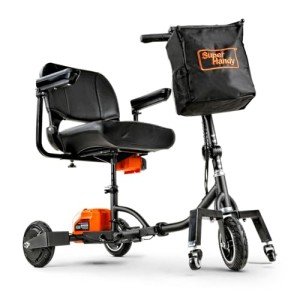5 Mobility Devices Lessons Learned From The Pros

Understanding Mobility Devices: Enhancing Independence and Quality of Life
In today's hectic world, the desire for mobility is universal. Nevertheless, certain medical conditions or age-related difficulties can hinder movement, resulting in an ongoing look for assistance. Mobility devices function as essential tools to improve independence, improve lifestyle, and allow individuals to engage totally in their communities. This short article provides a comprehensive overview of mobility devices, including their types, functions, choice criteria, and more.
Types of Mobility Devices
Mobility devices range from easy aids to intricate devices, customized to fulfill different requirements. Below is a table summarizing common types of mobility devices:
| Type of Device | Description | Perfect For |
|---|---|---|
| Walkers | Four-legged assistance devices that provide exceptional stability while strolling. | Individuals needing extra support. |
| Walking sticks | Single or three-legged sticks that enhance balance and support walking. | Those with minor mobility problems. |
| Wheelchairs | Seats mounted on wheels, readily available in manual and electric versions. | People with minimal or no mobility. |
| Scooters | Electric vehicles designed for outdoor use and ease of navigation. | Those who can't stroll cross countries. |
| Crutches | Devices that help people move weight away from an injured leg. | Individuals recuperating from leg injuries. |
| Rollators | Walkers with wheels, seats, and brakes for improved mobility. | Users needing rest alternatives while walking. |
| Lift Chairs | Reclining chairs that help users in standing up and taking a seat. | Seniors or those with mobility constraints. |
| Mobility Scooters | Small electric cars for limited mobility, typically used outdoors. | Individuals requiring support over cross countries. |
Key Features of Mobility Devices
When selecting a mobility device, a number of key features must be thought about to ensure optimum performance and ease of use:
- Weight Capacity: Understanding the gadget's weight constraint is crucial for security and efficiency.
- Adjustability: Devices should be adjustable in height and width to fit the user comfortably.
- Portability: Lightweight and foldable choices are essential for users who travel or require transportation.
- Stability and Safety: Look for functions like anti-tip wheels and sturdy structures to improve security.
- Ease of Use: Simple systems and user-friendly designs can make a significant distinction in daily use.
- Comfort: Ergonomic designs and padded seats can boost the user experience.
Selecting the Right Mobility Device
Picking the ideal mobility gadget can be a complicated job. Here are some steps to assist the decision-making procedure:
- Assess Needs: Evaluate the person's mobility obstacles and daily activities.
- Seek advice from a Professional: Engage healthcare experts who can offer suggestions based upon the person's physical condition.
- Trial Options: If possible, trial different devices to identify comfort and functionality.
- Evaluation Budget: Consider the cost of the gadget, including any extra features or adjustments required.
- Research study Options: Determine the best brand names and designs by reading reviews and contrasts.
Table: Comparative Analysis of Popular Mobility Devices
| Device | Advantages | Disadvantages |
|---|---|---|
| Walkers | Excellent stability, promotes walking. | Bulky, might restrict movement in small spaces. |
| Walking sticks | Lightweight, improves balance. | Might not offer adequate assistance for severe mobility problems. |
| Wheelchairs | Perfect for those with considerable mobility constraints. | Can be cumbersome, particularly in indoor environments. |
| Scooters | Great for outdoor use, easy to maneuver. | Limited indoor use, much heavier. |
| Rollators | Offers rest choice, easy to move. | May require more area than traditional walkers. |
| Lift Chairs | Comfy, assists shift from sitting to standing. | More costly, bigger footprint. |
Regularly Asked Questions (FAQs)
1. What is a mobility device?
A mobility gadget is any tool designed to assist individuals in moving and navigating their environment. This consists of walkers, wheelchairs, scooters, and crutches.
2. How do I understand which mobility gadget is best for me?
Consider your specific mobility challenges, physical capabilities, and way of life requirements. Consulting with health care specialists can likewise supply customized suggestions.
3. Are mobility devices covered by insurance coverage?
Many insurance strategies, including Medicare, may cover certain mobility devices. It's essential to examine with your insurance company for particular protection information.
4. Can I rent a mobility gadget instead of buying one?
Yes, lots of medical supply shops and drug stores offer leasings for mobility devices. This option is advantageous for individuals with short-term mobility issues.
5. How can I keep my mobility gadget?
Regular maintenance is vital. It includes cleaning the device, looking for wear and tear, and making sure all parts are working correctly.
The Impact of Mobility Devices on Quality of Life
Mobility devices significantly enhance the quality of life for individuals with restricted mobility. valentinawalters.top cultivate independence, motivate social interaction, and improve access to vital services and recreational activities.
- Increased Independence: Users can browse their areas, attend occasions, and participate in pastimes without depending on others.
- Social Engagement: Mobility devices assist in involvement in celebrations, consequently combating feelings of isolation.
- Enhanced Safety: Devices offer stability and minimize the risk of falls, promoting user self-confidence.
Mobility devices are more than simply tools for motion; they are entrances to independence and quality living. By understanding the different kinds of mobility aids offered, their key functions, and considerations for picking the ideal gadget, individuals can make educated choices about their mobility needs. Ultimately, the best mobility gadget can result in a more active, satisfying life. Whether it's a walker, wheelchair, or scooter, the right option contributes substantially to boosting the mobility and independence of users.

